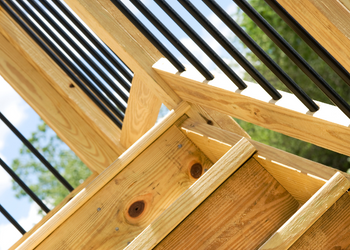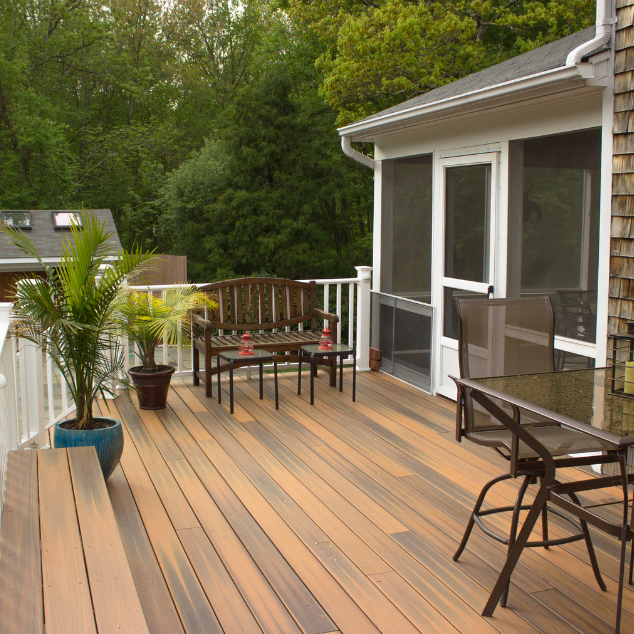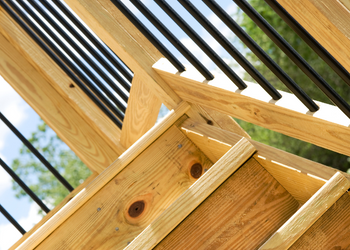When it comes to choosing materials for a deck, homeowners often face a dilemma: composite or wood? While both have their advantages and drawbacks, there are a few main factors you should consider including
cost, durability, maintenance, appearance, and environmental impact.
Cost
Cost is a common deciding factor. Generally speaking, composite materials tend to be more expensive upfront. However, they require less maintenance and have longer lifespans than wood, ultimately making them more cost-effective in the long run. On the other hand, wood is typically cheaper in the short term but may need to be replaced sooner and require more upkeep.
Ultimately, the choice between composite and wood should be based on personal preferences and budget considerations. It is important to weigh all factors and choose the option that best fits your needs.
Durability
Durability is another major consideration when choosing deck materials. Composite decking is known for its long-lasting nature and resistance to weather and wear, making it a popular choice for both residential and commercial decking projects. On the other hand, wood decking can be susceptible to warping, splintering, and other damage over time if not properly maintained.
Overall, composite decking tends to be more durable and require less maintenance in the long run. However, some high-quality wood options can also stand up well against wear and tear if properly cared for. It is important to carefully consider all factors before making a decision on deck materials.
Maintenance
When comparing the maintenance needs of composite and wood decks, it is important to consider the long term costs and time investment.
Composite decking materials do not require regular sealing, staining, or painting that traditional wood decks do in order to maintain their appearance. However, it does require some care. It should be cleaned regularly with a composite deck cleaner or combination of soap and water. This can save homeowners time and money over the lifespan of the deck.
However, wood decks may initially be cheaper and are easily customizable with stains and paints. They do require more regular upkeep though, as they are susceptible to warping, splintering, and rotting if not properly maintained. Wood decks also need regular cleaning, sanding, staining or painting and sealing every two to five years to protect against damage, and fully extend the life of the deck. In terms of overall maintenance needs, composite decking tends to be less expensive and require less work in the long run compared to wood.
Appearance
Composite decking often has a more manufactured, uniform appearance. It comes in a variety of colors and textures to mimic real wood, but some viewers may be able to tell the difference. We carry many of the top brands which all offer a wide variety of colors, blends, textures, and overall appearance. There is definitely not a shortage of appearance options to choose from.
Wood, on the other hand, has a timeless natural look and feel. It can also be stained or painted to fit any desired aesthetic. With endless paint or staining colors to choose from, you are guaranteed to find something that is exactly to look you are dreaming of. Again, the decision ultimately comes down to personal preference and what complements your home and surroundings best. Both options can create an attractive outdoor space.
Environmental Impact
Another factor you may want to consider when choosing deck materials is the environmental impact. Composite decking is often made with recycled materials, making it a more eco-friendly choice. Wood decking, on the other hand, may come from old-growth forests that have not been sustainably harvested.
It is important to do your own research and carefully weigh all options before making a decision. Both composite and wood decking have their own benefits and drawbacks in terms of environmental impact. Ultimately, the best option may vary depending on individual circumstances and preferences.




